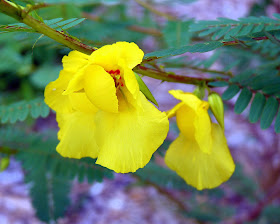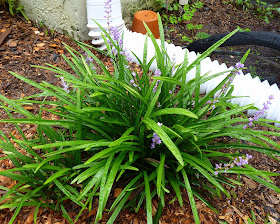The American White Ibis (Eudocimus albus), as these fellows are more formally known, is one of Florida's most easily-identifiable wading birds, due to the prominent curved orange beak. They are gregarious, and nearly always seen in large flocks. In fact, a single ibis wandering on its own is actually pretty unusual, and always causes us to speculate on what may have gotten him excommunicated from the tribe.
Ibis eat insects along with small fish and frogs, so you don't need to be near a water source to see them. They are just as frequently noted wandering through grassy areas where insects and lizards no doubt make fairly easy prey. They are also commonly seen along beaches, darting in and out of the waves. White Ibis juveniles are darker in coloration - presumably this gives them better camouflage - becoming mottled and eventually all white as they age. The ibis shown on the right below is nearly full-grown, with only the head and neck retaining the darker colors.
Florida is also home to Glossy Ibis (Plegadis falcinellus), which is not nearly as commonly seen in the Tampa area. We've only spotted it at Lettuce Lake Park, in the distance through binoculars. The Glossy Ibis is very dark in coloration, and can be confused with a juvenile White Ibis, but there's an easy way to tell them apart. As you can see in the picture below, even when a juvenile White Ibis is still very dark in color, its underside and rump are white. The Glossy Ibis does not have this white underside at any life stage. The Glossy Ibis, incidentally, is thought to be native to Africa and Southern Europe, accidentally introduced here in the 19th century. The White Ibis is native to Florida and other parts of the US.
Our daily noon parade may not be accompanied by 76 trombones, but it's a joy to watch all the same. Ibis are a common Florida bird, but one we have a soft spot for here in My Florida Backyard, so it's a pleasure to have their company on a regular basis - no admission ticket required.





































